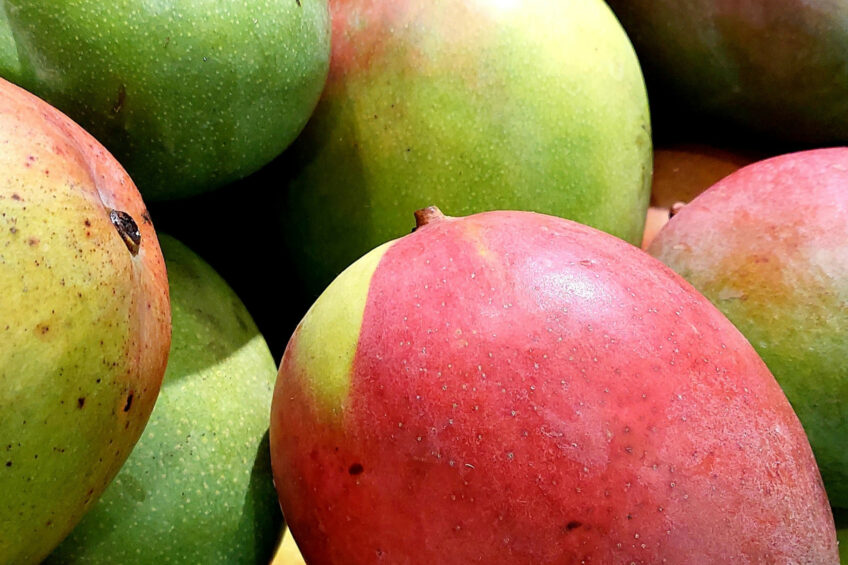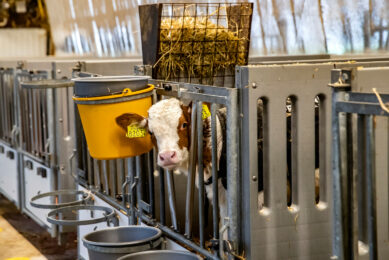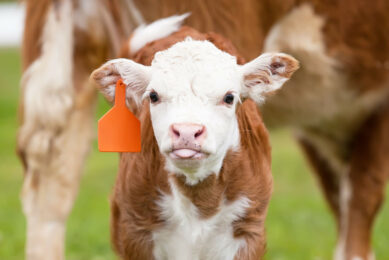Higher performance: Mango peel silage for dairy calves

Besides reducing transport costs and environmental pollution, ensiling fresh mango peel improves feed use efficiency and dairy calf growth performance, a new study shows.
The major challenges fruit processing factories face for waste disposal include high transportation costs, limited landfill availability and environmental pollution. Developing efficient waste management techniques to reduce these fruit and food processing challenges is key.
In 2021, global mango production was estimated at 57 million tonnes. Mango peel represents 7-24% of the whole fruit weight. Previous studies show fresh mango peel is a good source of dietary fibre, carotenoids and sugars, and has high energy content and degradability values.
Feeding mango peel silage
In this study, fresh mango peel was sun-dried for 1 day to reduce its moisture content before being ensiled. It was then fed to dairy calves as a source of roughage to evaluate its beneficial effects on feed intake, nutrient digestibility, energy balance, growth, feed efficiency and blood metabolites. The experiment lasted 12 weeks and calves were housed in individual pens.
The pH of mango peel silage was within the optimal range for well-preserved silage. After ensiling, the energy and crude protein contents increased, while fibre content (NDF and ADF) decreased. This can be attributed to the microbiota using water-soluble carbohydrates during the ensiling process, resulting in their growth and multiplication as well as the enzyme secretion involved in degrading cellulose, hemicellulose, and other complex cell structures. All this leads to decreased fibre content and increased crude protein content in mango peel silage.
Nutrient intake and digestibility
Research shows that ruminant feed intake and weight gain are affected by dietary NDF and total digestible nutrients. In the current study, researchers pointed out that the lower NDF and ADF contents and the higher total digestible nutrients content in the mango peel silage group improved intake of dry matter, organic matter and crude protein while decreasing fibre intake (Table 1).
They stated that the lower fibre content can facilitate feed usage by ruminal microorganisms, resulting in higher fermentation rates and digestibility; however, the results of their study also showed slight improvements in dry matter and crude protein digestibility.
Growth performance and energy balance
The results showed that the mango silage group had higher feed intake, improved nutrient digestibility and better energy balance which were attributed to the higher growth performance observed in the calves fed mango silage (Table 2).
The mango silage group showed higher total weight gain, higher average daily gain, and greater feed efficiency than the control group. The researchers stated that the higher feed intake and feed energy content of the mango peel silage resulted in a higher energy intake and positive energy balance compared to the control diet. They also stated that the mango peel silage had higher fermentable carbohydrate and energy content than mulato grass and blackgram residue, which were substituted by the mango silage in the experimental diet formulation.
Blood metabolites
Aspartate aminotransferase (AST) is an enzyme found in the heart and liver muscle and plays a vital role in the metabolism of amino acids. The results showed a higher level of AST in the calves fed mango peel silage indicating that feeding the mango silage has a positive effect on the amino acid metabolism of the calves. AST concentrations of the control and mango peel silage groups were 33.31 and 70.81 U/L, respectively.
On the other hand, increased blood glucose levels have been associated with greater energy intake or more supplied soluble carbohydrates, leading to a positive energy balance. In the present study, the mango silage group had greater digestible nutrient and energy intakes, and positive energy balance, which resulted in higher blood glucose concentration compared to the control group.
Preservation before ensiling
As mango peel has a high water content, preservation techniques before ensiling are always important; and because mango peel could be part of retail food waste, it is important to pick the best pre-ensiling preservation method.
Researchers from the University of Lethbridge and the University of Manitoba assessed the feasibility of producing silage solely from retail food waste and the ability of 2 ensiling practices to generate moisture content that would produce high-quality food waste silage for ruminant livestock.
In their study published in the journal Agriculture (2024), they blended discarded fruits, vegetables, and bakery products from grocery stores into silage to assess the ability to preserve their nutritional value and contribute to the feed supply. Two pre-ensiling treatments for reducing the water content of food waste were evaluated: sun-dried and passive-dried (drying in normal barn conditions).
They found that the food waste blend can produce good-quality silage but better methods than sun-drying and passive drying are required to increase silage dry matter. In their study, sun-dried increased the dry matter of food waste blend by 5% compared to control, with passive-dried only showing a 1% increase in dry matter. In cases of low dry matter content, the researchers suggested incorporating high dry matter by-products for optimal fermentation. However, they said incorporating this may significantly increase the cost of using food waste as livestock feed.
Conclusion
Researchers concluded that ensiling fresh mango peel after sun-drying for 1 day improved silage quality and feeding a diet containing the mango silage as a roughage source improves feed intake, energy supply and growth performances of dairy calves. They said their study supports the view that mango peel silage is a high-quality feed and roughage component in ruminant diets.
“Livestock producers and agro-industrial companies may use this data to improve ruminant production sustainably using agro-industrial waste from fruit processing as a valuable feed resource with low environmental impact,” they said.
Join 13,000+ subscribers
Subscribe to our newsletter to stay updated about all the need-to-know content in the dairy sector, two times a week.










